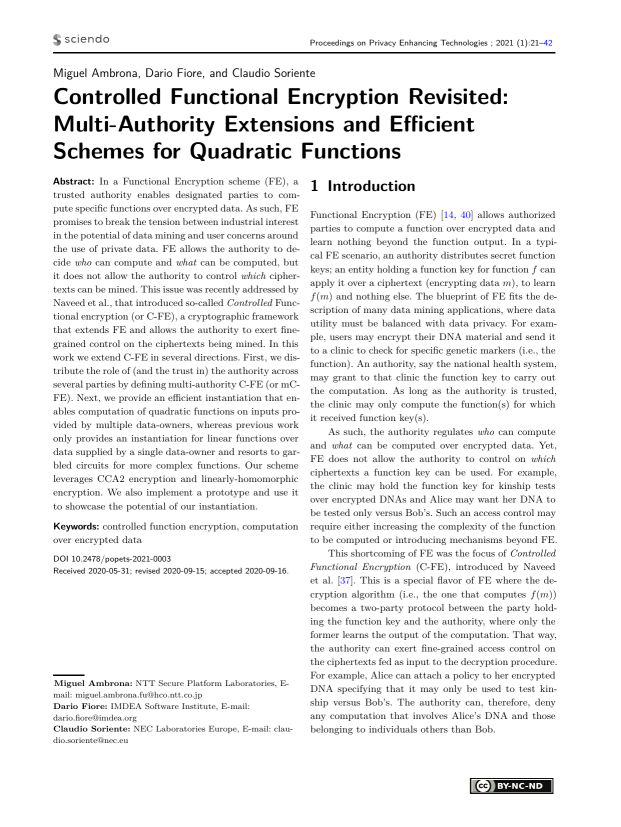Controlled Functional Encryption Revisited: Multi-Authority Extensions and Efficient Schemes for Quadratic Functions
Authors: Miguel Ambrona (NTT Secure Platform Laboratories), Dario Fiore (IMDEA Software Institute), Claudio Soriente (NEC Laboratories Europe)
Volume: 2021
Issue: 1
Pages: 21–42
DOI: https://doi.org/10.2478/popets-2021-0003
Abstract: In a Functional Encryption scheme (FE), a trusted authority enables designated parties to compute specific functions over encrypted data. As such, FE promises to break the tension between industrial interest in the potential of data mining and user concerns around the use of private data. FE allows the authority to decide who can compute and what can be computed, but it does not allow the authority to control which ciphertexts can be mined. This issue was recently addressed by Naveed et al., that introduced so-called Controlled Functional encryption (or C-FE), a cryptographic framework that extends FE and allows the authority to exert finegrained control on the ciphertexts being mined. In this work we extend C-FE in several directions. First, we distribute the role of (and the trust in) the authority across several parties by defining multi-authority C-FE (or mCFE). Next, we provide an efficient instantiation that enables computation of quadratic functions on inputs provided by multiple data-owners, whereas previous work only provides an instantiation for linear functions over data supplied by a single data-owner and resorts to garbled circuits for more complex functions. Our scheme leverages CCA2 encryption and linearly-homomorphic encryption. We also implement a prototype and use it to showcase the potential of our instantiation.
Keywords: controlled function encryption, computation over encrypted data
Copyright in PoPETs articles are held by their authors. This article is published under a Creative Commons Attribution-NonCommercial-NoDerivs 3.0 license.

